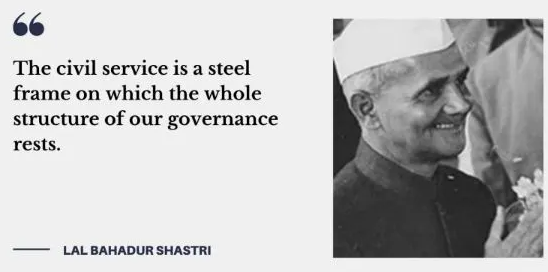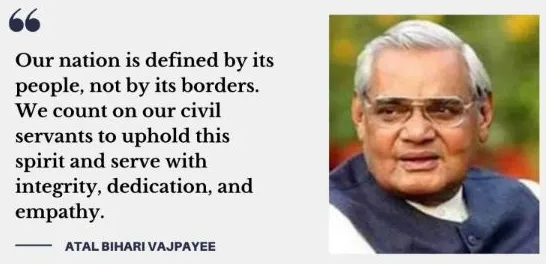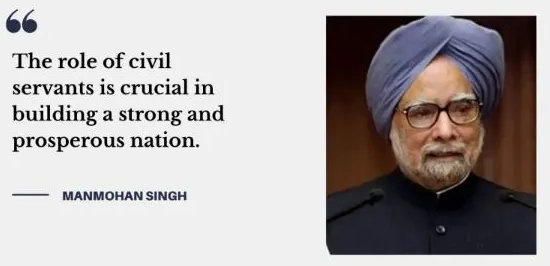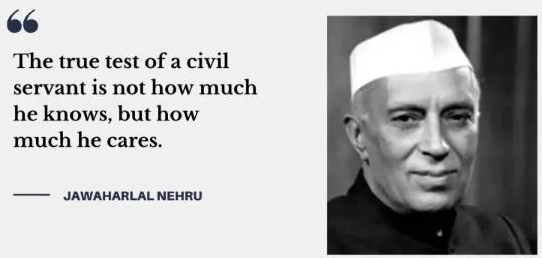|
History of Civil Servants in India
|
|
Early Civil Service (East India Company Era)
- Lord Cornwallis is considered as ‘Father of Civil Services in India’.
- The Charter Act of 1793 established covenanted civil services, which led to a more structured administration and pensions for employees.
- Until the mid-19th century, Directors of the East India Company nominated youth for civil service.
- The Covenanted Civil Service formed the European elite of Indian administration.
- Lord Wellesley founded the College of Fort William in Calcutta in 1800 to educate young recruits for the Civil Services.
- But the directors of the Company, in 1806, replaced it with their own East Indian College at Haileybury in England.
- Entry required passing a simple examination and through a system of patronage for admission to the Company’s College at Haileybury.
- Training at Haileybury included 2 years of study in Law, Political Economy, and Indian Languages.
- Appointees were sent to India after training.
|
|
Raja Ram Mohan Roy & Civil Service Reform
- Raja Ram Mohan Roy, the father of Indian nationalism was the first Indian to have placed the demand for reform of the civil service in India in a formal manner.
- In his evidence before the select committee of the British Parliament before the grant of Charter in 1832 he asserted that many of the Indians were fully qualified to discharge the duties assigned to them.
|
|
Transition to Competitive Examinations & Macaulay’s Reforms (1853–1859)
- Before 1853 EIC directors appointed Civil Servants and Board of Control members were allowed to make some nominations.
- Charter Act of 1853 abolished the patronage system and introduced open competitive examinations.
- Reformers like Sir Charles Trevelyan and Robert Lowe supported competitive exams as a way to select candidates with character and ability.
- Macaulay Committee (1855) recommendations: Lord Macaulay’s Report introduced a merit-based civil service.
- Civil servants should be university graduates (preferably from Oxford or Cambridge).
- Emphasis placed on general academic education, not vocational or legal training.
- Recommended replacing the patronage system with competitive examinations.
- A Civil Service Commission was established in London (1854).
- Age limit: Minimum 18 years, Maximum 25 years. Syllabus was heavily focused on European Classics, disadvantaging Indian aspirants.
- The first competitive exams for the Indian Civil Services (ICS) were held in London in 1855.
|
|
Indian Entry into Indian Civil Services (ICS)
- Indian Civil Services Act of 1861 - Recruitment to civil services was structured to reserve key posts for the British through the Covenanted Civil Service.
- It allowed Indians and Europeans with at least seven years of residence in India to hold certain offices.
- They had to pass an exam in the local vernacular of their assigned district.
- First Indian to clear ICS: Satyendranath Tagore in 1864.
- Despite efforts, simultaneous exams in India were denied for decades. British reluctance aimed at limiting Indian success in ICS
|
|
Indian Civil Service Exams in India (Post WWI)
- Due to Montagu-Chelmsford Reforms, simultaneous exams were approved.
- From 1922, ICS exams began in India (initially in Allahabad now Prayagraj, later Delhi).
- Public Service Commission was established on 1 October 1926.
- Exams in London continued alongside.
|
|
Judicial and Administrative Reforms (1876–1935)
- 1876: Covenanted Civil Service was restructured into Executive and Judicial branches to enhance justice delivery.
- Judicial training made compulsory for those aspiring to be District Judges.
- Deputy Collectors were appointed by District Collectors in consultation with the Board of Revenue, without competitive exams.
- The Aitchison Commission – It was formed in 1886 aimed to enhance Indian participation in public services.
- It recommended the abolition of the Statutory Civil Service, classification of services into Imperial, Provincial, and Subordinate categories.
- It also recommended capping the civil service entry age at 23 years and advised discontinuing simultaneous examinations in England and India.
- The Islington Commission’s report (1917) - It recommended that 25 percent of the higher government posts should go to Indians.
- 1918: 50 Indians were nominated to the Indian Civil Service by the Secretary of State.
- Lee Royal Commission on Superior Civil Service in India(1923) - The purpose was to consider the ethnic composition of the superior Indian public services of the government of India.
- The Commission recommended the division of main services into three classes.
- All India Services
- Central Services
- Provincial Services
- Government of India Act 1935 established the Federal Public Service Commission.
- Through Public Service Commission for each of the provinces, provisional autonomy was introduced.
|
|
Imperial Police Service
- Superior police officers formed part of the Imperial Police.
- First open competition in 1893 in England; top 10 became probationary ASPs.
- Indians allowed entry post-1920.
- Exams held in both India and England from 1921.
- Indianisation was slow, despite Islington and Lee Commissions.
- Till 1931, Indians filled only 20% of SP posts.
- Post-1939, more Indians were recruited due to lack of suitable European candidates.
|
|
Imperial Forest Service
- Imperial Forest Department established in 1864.
- Imperial Forest Service (IFS) constituted in 1867.
- Officers trained in France and Germany (1867–1885), then Coopers Hill, London till 1905.
- From 1920, recruitment held in both India and England, and by promotion from provincial services.
- Post-independence, the Indian Forest Service (IFS) was created in 1966 under All India Services Act, 1951.
|
|
Post-Independence Developments
- 1947: After transfer of power, the Indian Civil Service was replaced by the Indian Administrative Service (IAS).
- 1950: Federal Public Service Commission was replaced by the Union Public Service Commission (UPSC).
|



